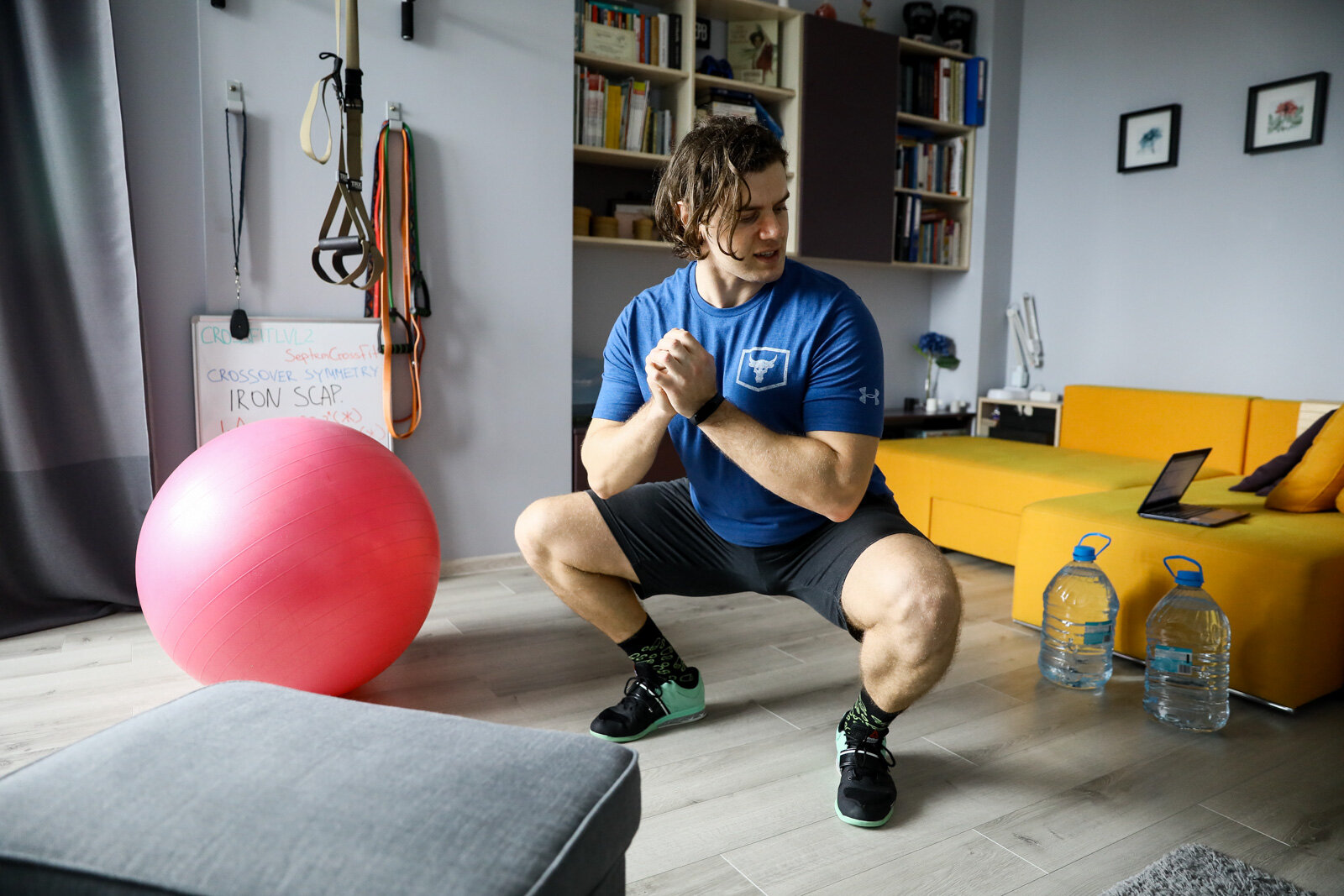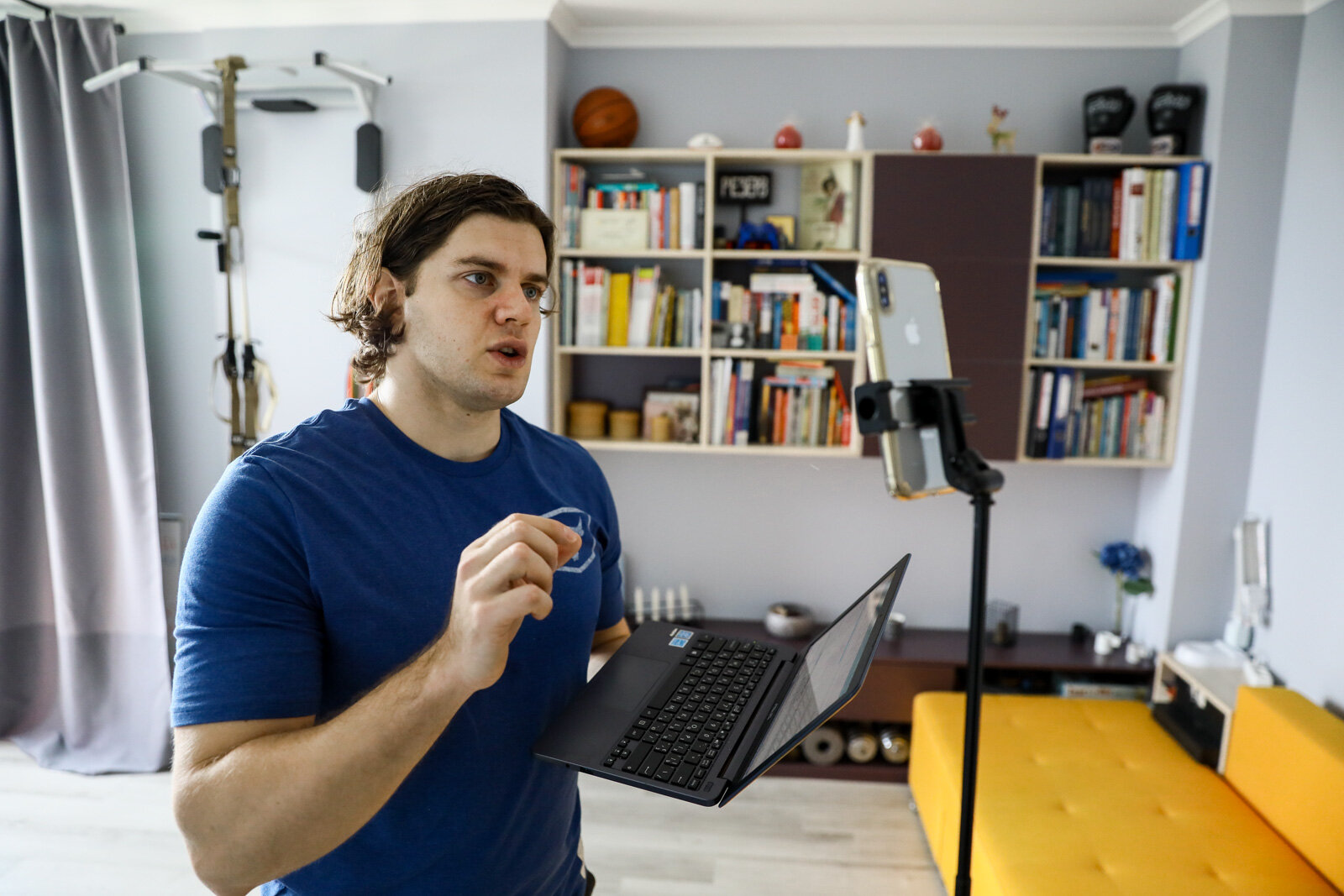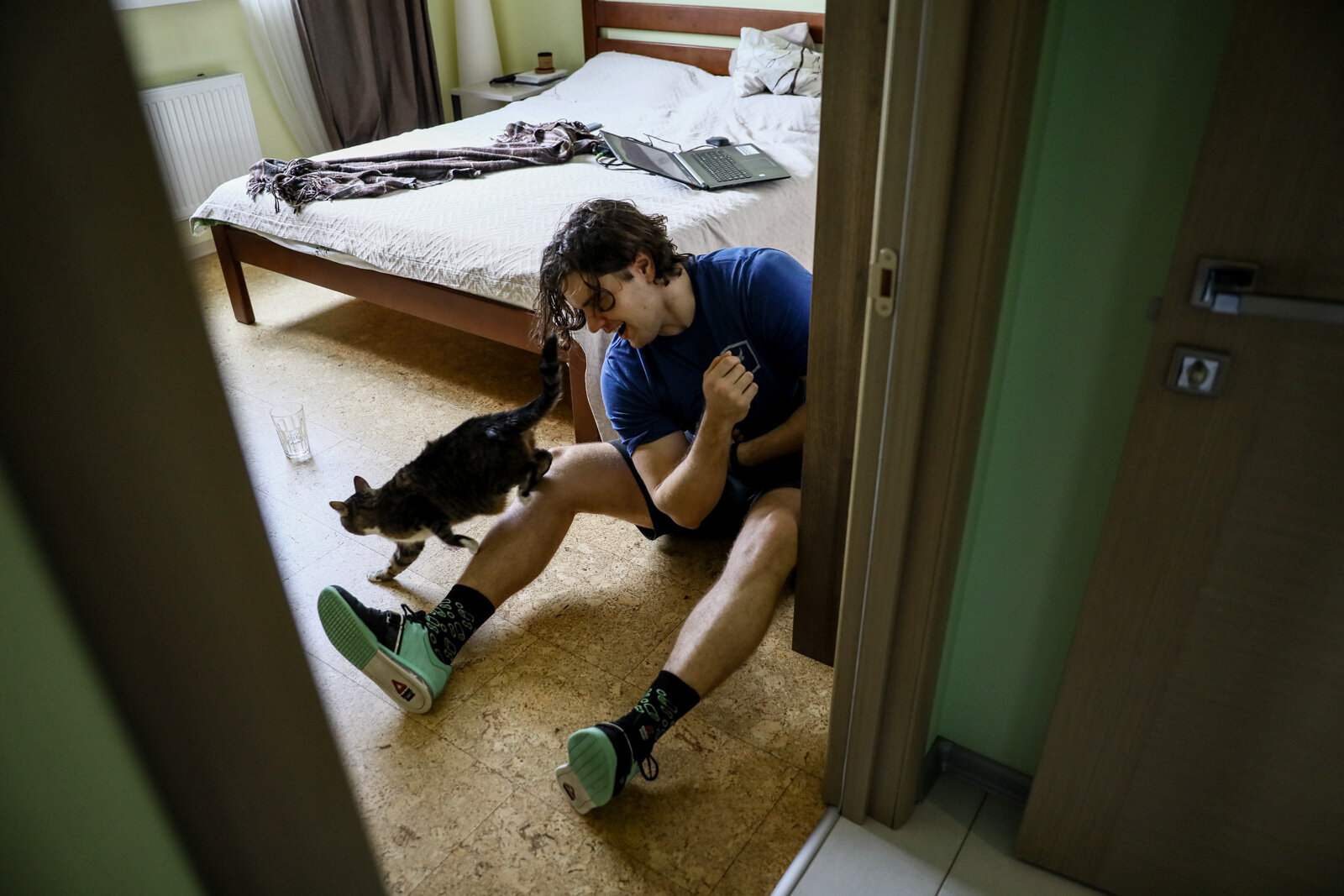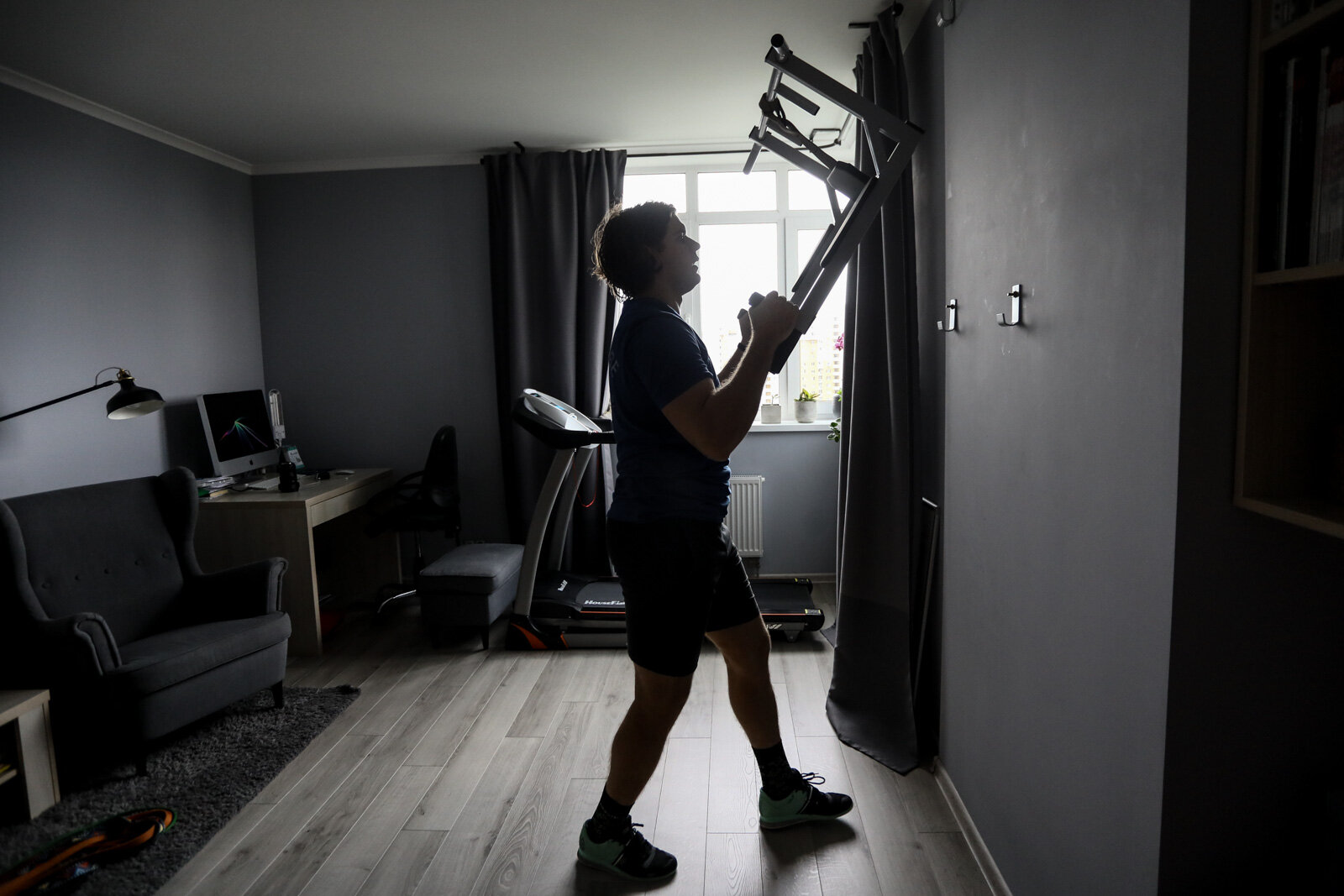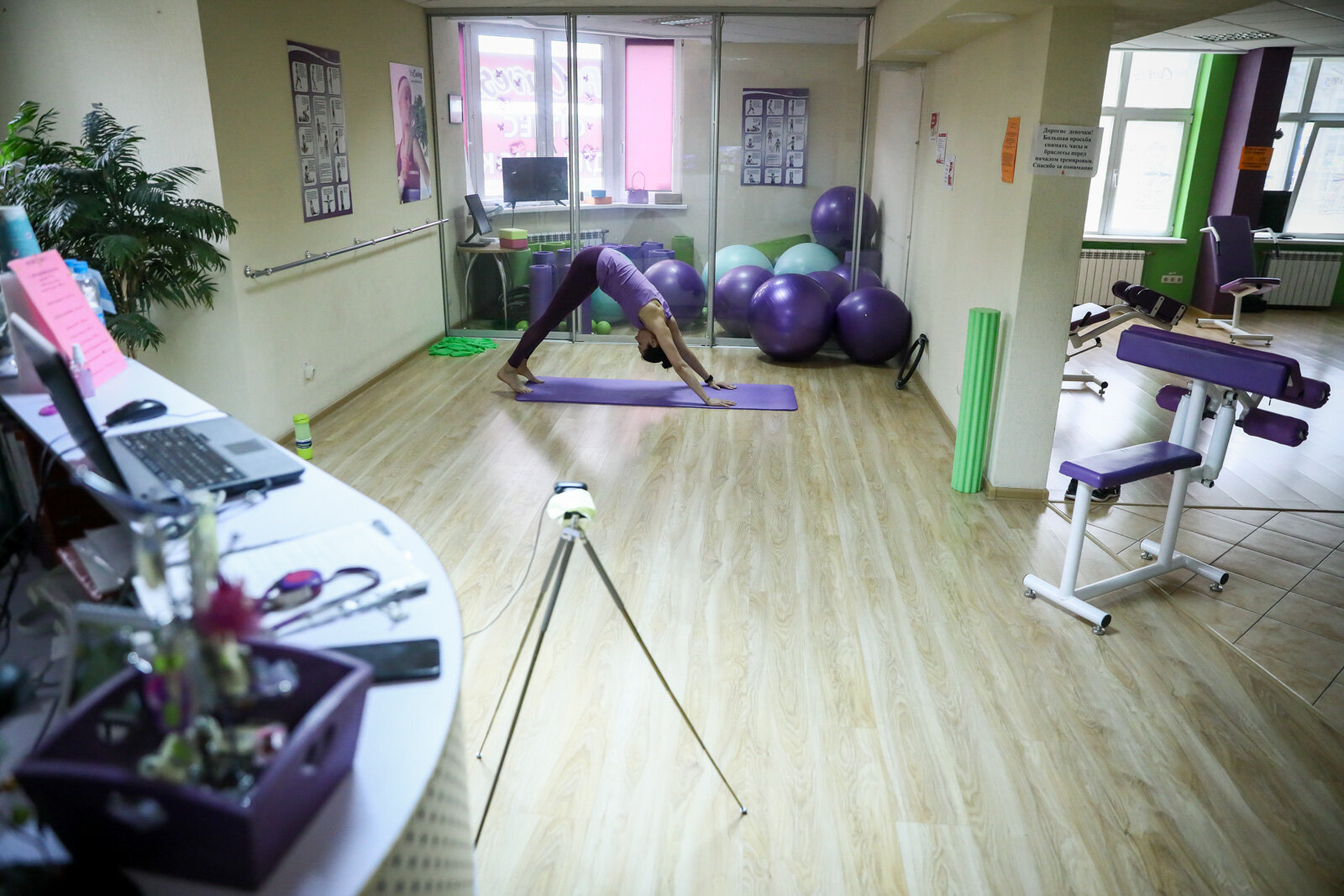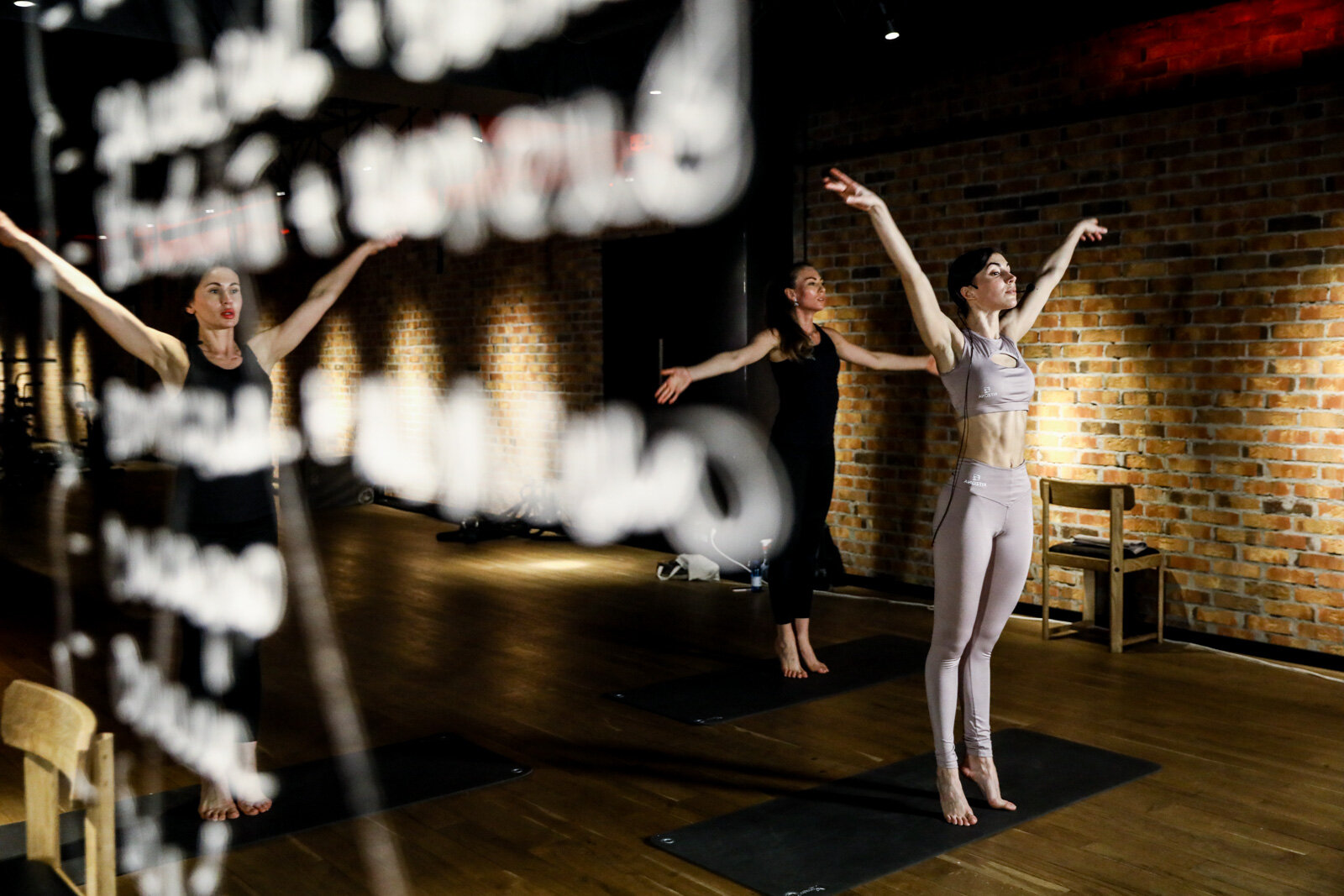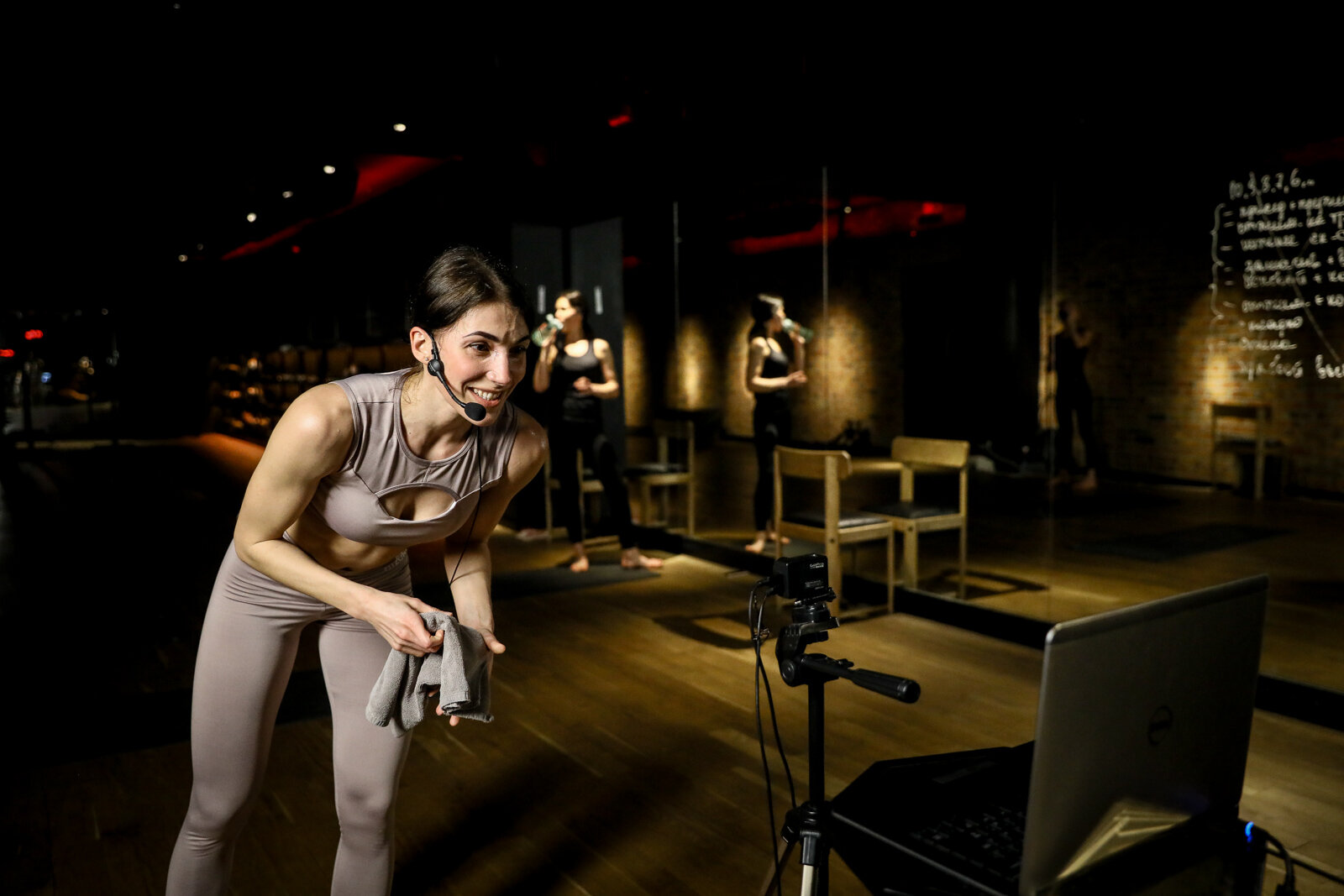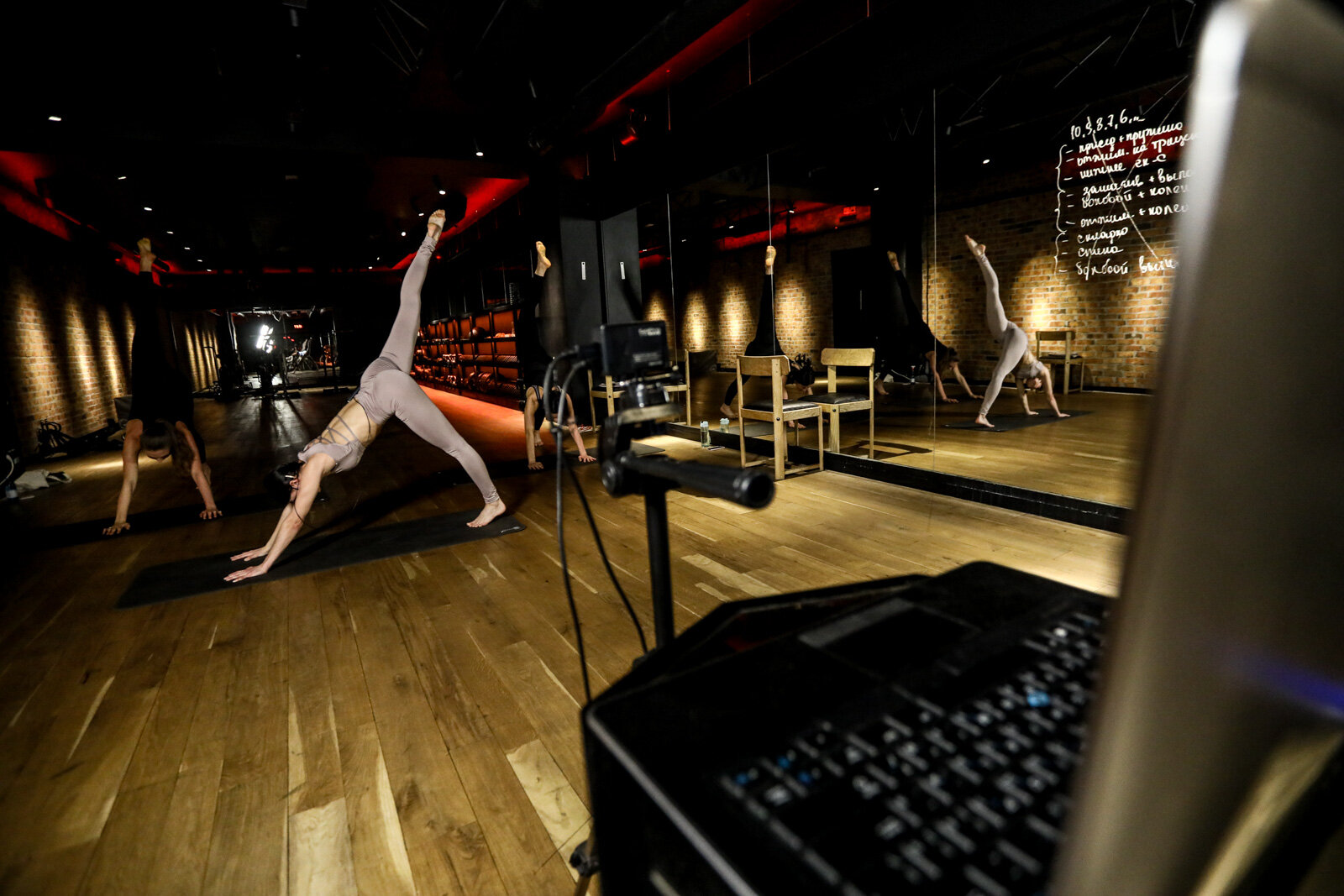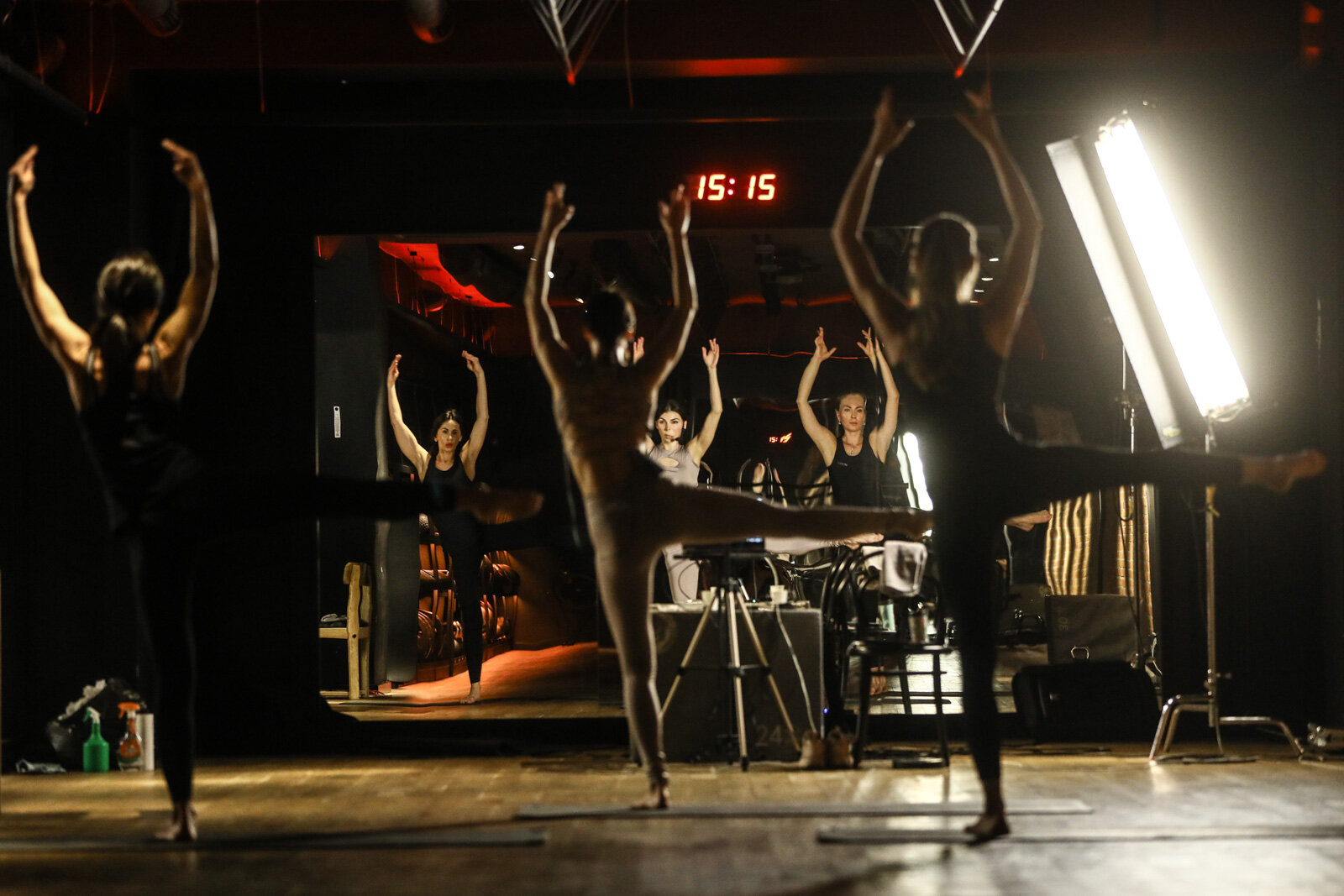Like tens of thousands of Ukrainian trainers, Nikolay Ihnatenko prefers to work with his clients face-to-face, without a screen between them.
“You don’t have the same contact when you work online,” says Ihnatenko, who owns the Voin CrossFit gym in Kyiv. “I’ve been doing it for two months, but I’m still not happy with the results.”
But trainers have no choice now. Since the government forced gyms in Ukraine to close under quarantine to prevent the spread of the novel coronavirus on March 17, their owners and trainers had to learn to work online and find other ways to make money. Or at least not to lose it.
For over two months, Ukrainian gyms have been trying to make ends meet by negotiating rent, cutting salaries or laying off staff. Some are also trying to rent out or sell their equipment.
The government touted allowing gyms to reopen on May 22, but decided against it at a meeting on May 20. Now the gyms may start working on June 1, when the next stage of easing the quarantine kicks off. Kyiv mayor Vitali Klitschko also said on May 18 that the city intended to allow gyms to work starting May 22, but later said that this would happen starting June 1.
In any case, in two months of the shutdown, over 1,750 gyms that make up Ukraine’s $265.5-million fitness industry, as estimated by Fitness Connect UA analytical platform in 2018, have been hit hard. At least 30% of them will shut down by the end of the year, according to the KPM Fitness consulting company.
“It’s a crash,” Ihnatenko told the Kyiv Post. “We’ve been without a profit for almost two months. It’ll be good if we break even this year.”
Surviving crisis
Ihnatenko’s gym is the lucky one, he says. The Voin gym is small and has a dedicated community. While it froze membership dues of all its clients, one-third of them asked to unfreeze theirs to support the gym, and some even donated money. Plus, the landlord froze the gym’s rent.
“It’s rare, and we’re lucky,” Ihnatenko says. “Bigger gyms have a more formalized relationship with clients, so I doubt they will get as much help. I think they’ll be hit even harder and on a larger scale.”
Yes and no. While larger gyms and fitness networks face greater losses, they also often have the benefit of a financial reserve. But with the quarantine already lasting over two months, they are trying different strategies to stay on the safe side.
Sport Life, Ukraine’s largest fitness network in terms of square meters of exercise space, is selling off some equipment and has organized free online workouts to retain customers. FitCurves, the largest network by the number of gyms, is selling memberships for online exercises. The third-largest network, MalibuFit, has both free and paid online workouts and sells a course on how to work online for trainers.
“We were mentally not prepared, but our trainers were very professional… The best of them quickly started working online,” MalibuFit founder Dmytro Chorniy told the Ukrainian Fitness Association in an interview. “This didn’t help the club financially, but we kept in touch with clients and trainers stayed paid.”
Nataliia Bilevych works as a trainer at a fitness network that suspended all work except for recording a few regular workout videos for social media. So like many other trainers, she had to learn how to train people online to make money. She now remotely trains her gym clients for half the price. Still, only a handful of them joined in.
“The online work doesn’t compensate for the workload I had before. My income dropped sharply,” she told the Kyiv Post. “I’ve survived these months, literally, because I had some savings.”
A case that stands out is Smartass, a boutique fitness studio in Kyiv. The next day after the government ordered gyms to close, Smartass rolled out online workouts and started selling them for about one-fourth of the regular price. They also rented out exercise bikes to clients and were able to negotiate a 60% rent discount from their landlord.
“With these measures, we were able to cover about 80% of our needs,” Smartass’s CEO Victor Gluschenko told the Kyiv Post. “It’s great to break almost even while surviving the crisis.”
Going online
Gyms and individual trainers who are going on the web are entering an already competitive market of online fitness. There are a variety of apps providing workout plans and videos, including free ones by sportswear giants Nike and Adidas. Sales of U.S. digital fitness companies like Peloton and MIRROR have surged under quarantine.
This is also true for the Ukrainian BetterMe company. Their fitness apps have seen 103% growth in the number of new users and a 61% increase in usage time worldwide. The company says that its retention rate is up 35%, meaning that more people keep returning to train with the app.
“Despite the fact that the entire fitness industry has gone online, we don’t feel competition from newcomers,” BetterMe CEO Victoria Repa told the Kyiv Post. “Most of them provide consumers only with exercises but don’t consult on nutrition, don’t have any experience in at-home workouts and customer journey.”
And yet there are some things that personal trainers are better suited to give their clients during a pandemic, even if it’s online: personal attention, motivation and support.
Bilevych had to start her online coaching almost from scratch. In the first two weeks of the quarantine, she and her husband, also a coach, bought video equipment and recorded instructional videos for clients. She now sends them individual workout plans, asks them to film themselves and gives feedback.
“I’m also trying to give them knowledge on why it’s important to train and follow a diet in a certain way,” she says. “Motivation and support are also important. I feel like they are my friends and we support each other.”
But both Bilevych and Ihnatenko would much rather train their clients offline in a gym. Ihnatenko now trains a third of his usual clients individually via Zoom video calls for half the price. He first tried to train groups via Zoom, but says it’s much harder to do than live in the gym.
“There are many difficulties,” he says. “I’m not a proponent of this digitalization and transition online, which we will all experience.”
Meanwhile, Smartass fitness studio is going with the flow. They started training via Zoom, but then switched to YouTube for better sound and video quality since their workouts are so much about music and atmosphere. While they had about 1,000 regulars before the crisis, they managed to attract their core of some 300 clients online and add a few new clients from out of town.
So now Smartass has decided they will keep some of the online workouts even after the quarantine ends and the gym goes back to normal.
“Moreover, we are working on a new app for online training,” Gluschenko says. “The crisis pushed us online, but obviously, it’s an interesting niche. And we see things we can make cooler there.”
What’s next
What still worries gym owners and trainers the most is when the quarantine is going to end, of course. The second question on their minds is how many people will return when gyms are free to reopen.
Most agree that the number of visitors will be lower at first. The government may limit the number of people in gyms – no more than one person per 10 square meters, like it currently is in grocery stores. People initially may also be wary of getting infected.
Therefore, gyms’ first goal will be to make visitors feel safe by fostering social distancing and implementing other protective measures. Smartass, for example, will most likely add antiseptic dispensers and have temperature screenings at the entrance during the first weeks.
Summer is traditionally a slower season for gyms, but this may change if people want to socialize at gyms again and won’t be able to travel abroad for vacations. But because of the economic crisis, people will also have less money to spend on fitness.
Ihnatenko says that Ukrainians may catch up on the international trend for home and garage gyms with small amounts of equipment.
People who want to stay safe and spend less will also continue to drive the online fitness trend. So gyms and trainers will have to have both: online and offline options.
Still, virtually everyone in the fitness community agrees that, because of the pandemic, people will exercise more to improve their immune system.
“There will be more demand for fitness to improve health,” Ihnatenko says.
CORONAVIRUS IN UKRAINE: WHAT YOU NEED TO KNOW
- As of May 19: 548 people have died from the disease in Ukraine and 5,632 have recovered.
- 18,876 confirmed cases of COVID-19 in Ukraine as of May 19. The first case was identified on March 3.
- Ukraine has extended the quarantine until May 22 but started easing restrictions gradually.
- Here’s what opened in Ukraine on May 12.
- How the Ukrainian government has been responding: TIMELINE
- Misinformation on coronavirus is viral in Ukraine.
- Where to buy masks.
- Why the Kyiv Post isn’t making its coverage free in the times of COVID-19.
- Coronavirus stops the Kyiv Post’s print edition for now.
Effects on the economy:
- COVID-19 is already inflicting harm on Ukraine’s economy.
- The former minister of economy says half a million Ukrainians may lose their jobs in the COVID-19 crisis.
